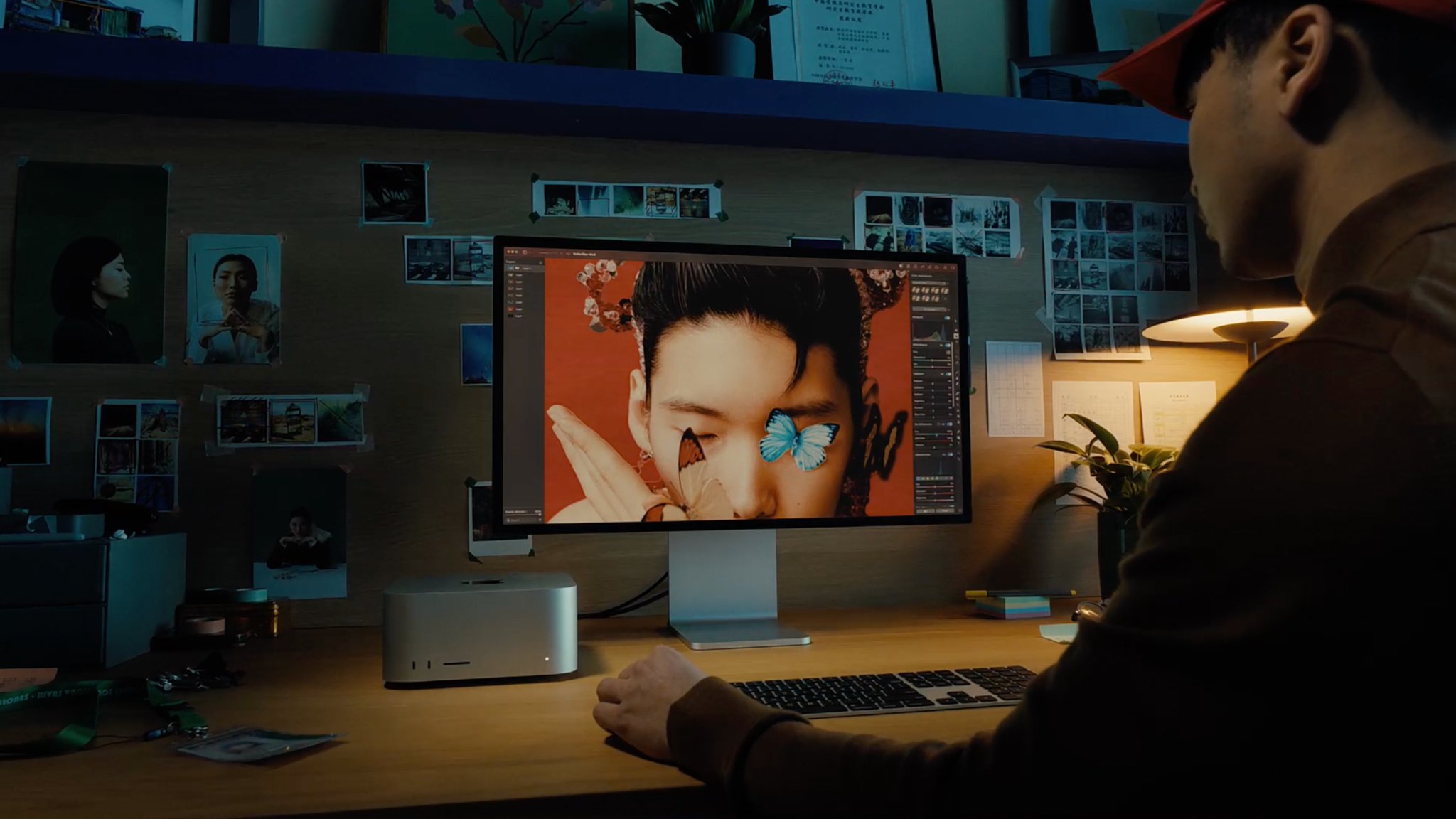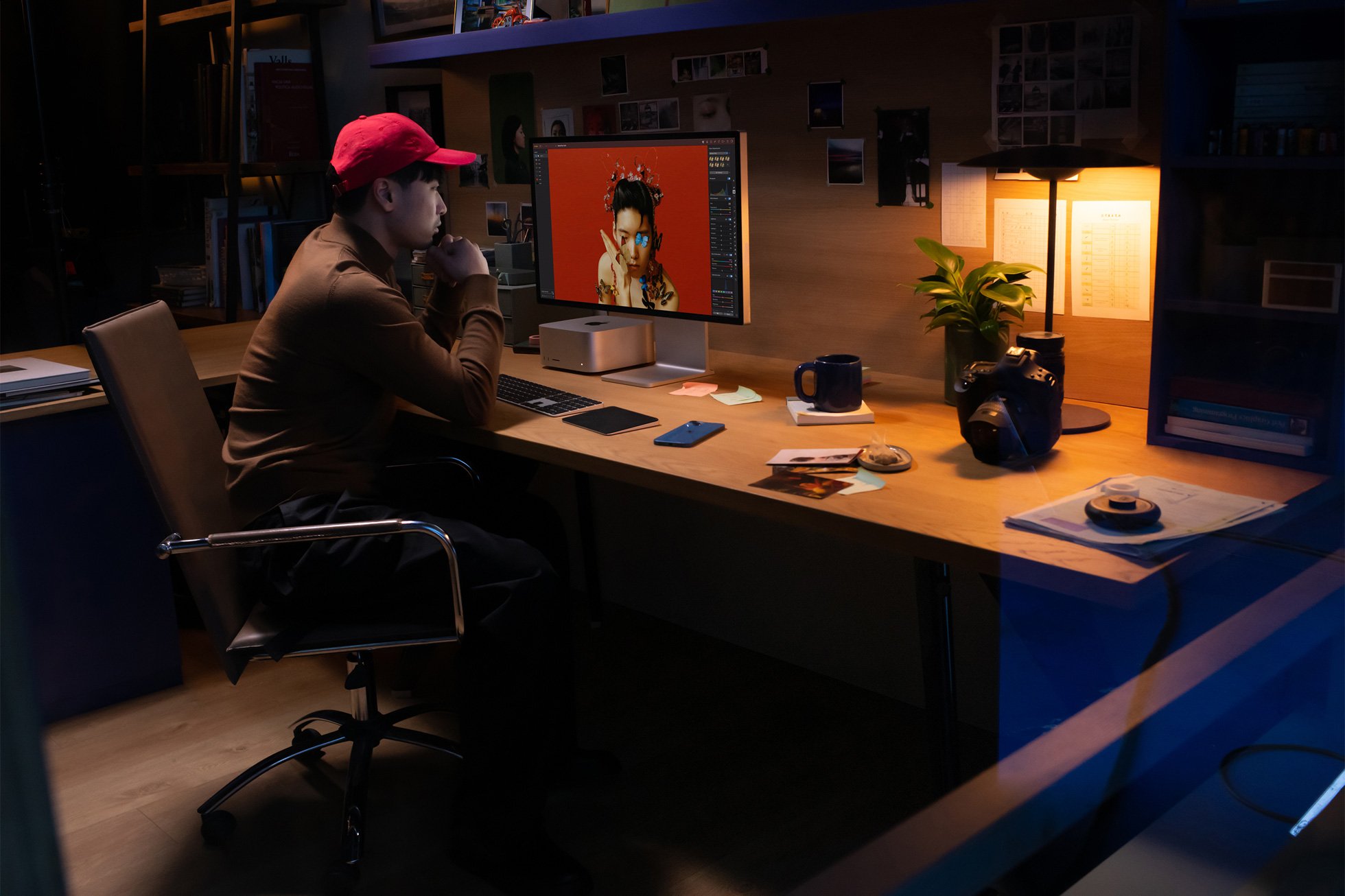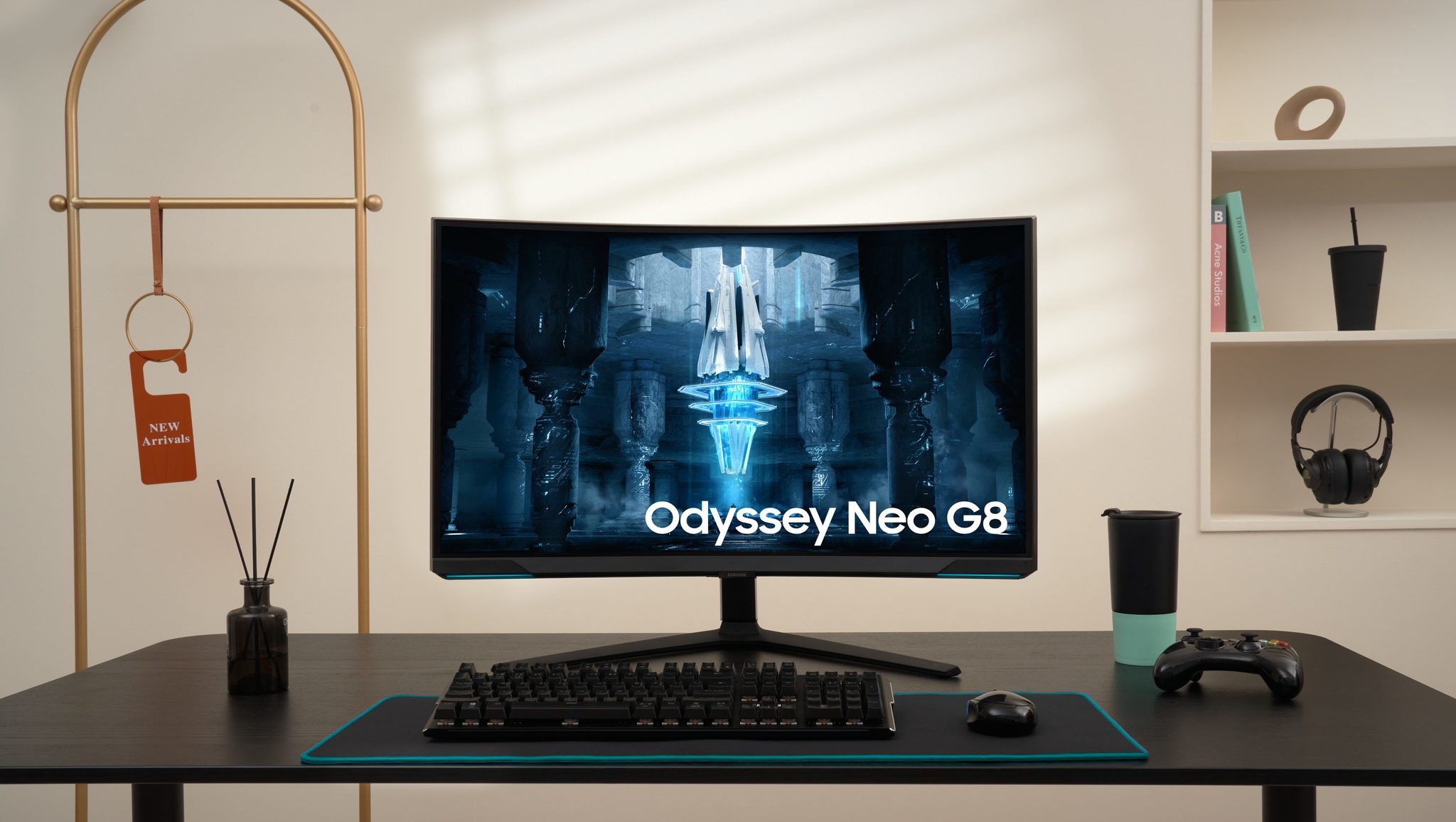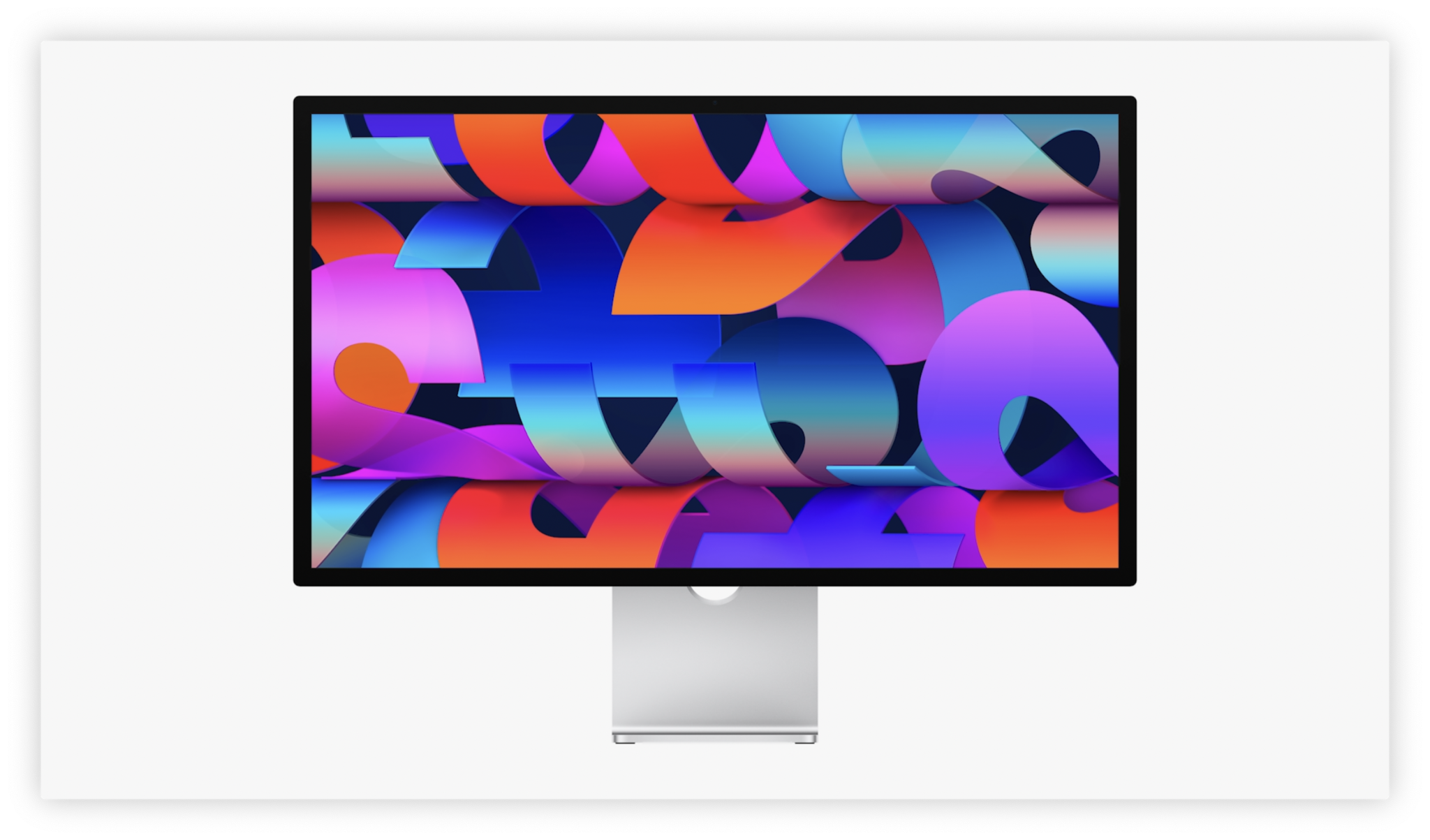Features or pixels: Apple Studio Display and the battle to be your monitor

Buying a monitor for your Mac can be either infuriatingly complicated or the easiest thing in the world, money notwithstanding. Many of the concerns Mac buyers had were fixed when Apple announced the Studio Display in early 2022 — but that isn't the end of the story.
You don't need to have been paying hawk-like attention to know that the Studio Display received a lot of pushback at launch. It isn't cheap, of course, with the $1,599 starting price enough to put some off. Others complained about its lack of features — no high refresh rate mode, no mini-LED, no HDR support, and more. Things got worse when people started using the thing, with reports of abysmal webcam quality littering the internet as soon as reviews began to appear online.
But all of this missed the point somewhat. The Studio Display doesn't have any competition. It stands on its own and, for that reason, it's the very best Mac monitor most people can buy. However, it could also be the worst. Let me explain.
It's all about the pixels
The Studio Display is a 27-inch monitor with a resolution of 5K, or 5120x2880 if you prefer. To some buyers, that's all that matters and that was enough to have them slapping down pre-orders before the price was announced.
To understand why, you need to remember an important factor — to many, a monitor at around the 27-inch mark needs to have a resolution of at least 5K to be classed as Retina. That is, the resolution is so high and the pixels so crammed together that they are no longer discernable to the human eye. And that's important — again, to some, not all — when spending eight hours and above staring at a computer monitor.

Go above 27 inches and you're going to need more pixels which is why Apple's excruciatingly costly Pro Display XDR has a 6K resolution at 32 inches. Despite the larger canvas, those extra pixels fill the space just so, making themselves invisible in the process.
The way macOS is set up, that's important and it ensures that lines are crisp and on-screen characters look like they were printed on the very best printer. As we found when Retina first debuted with Apple's iPhone 4 back in 2010, it almost looks as if the text is printed onto the display.
iMore offers spot-on advice and guidance from our team of experts, with decades of Apple device experience to lean on. Learn more with iMore!
Sure, people could buy other monitors and make do, but they don't want to. They spend their time looking at Retina iPhones and the stunning MacBook Pro displays when on the go and don't want to have to look at a mish-mash of pixels when sitting at their desk. That's reasonable, right?
The competition that isn't really
I mentioned earlier that the arrival of the Studio Display was a big deal, and it was. But it wasn't the first display available to Mac users at that resolution.
The LG UltraFine 5K is essentially the same monitor, although Apple's version is slightly brighter at 600 nits compared to the LG's 500 nits. The LG also lacks in contrast and color reproduction, but the bones are the same: 5K, 27 inches. It's cheaper, too, and around $300 cheaper, depending on where you look. The LG UltraFine 5K is exactly what Mac users have been buying assuming they couldn't stretch to a Pro Display XDR, but they universally hated it. Its plastic design, terrible stand, and LG's abysmal customer service all contributed. The fact that they kept failing didn't help, either. All everyone wanted was an Apple monitor of the same size and with the same resolution — and they got it with the Studio Display.
There are, of course, plenty of other monitors on the market, and many with features that the Studio Display can't claim to have. That means that people who want Retina might have to accept missing out on a couple of things, at least at this price point.
Retina means giving up on other things
All of this still isn't enough for some — usually, those who aren't actually in the market for such a monitor — but that's another story.
Monitors like the stunning Samsung Odyssey Neo G8 might have ridiculous names, but they have something Apple's Studio Display doesn't in the shape of a 240Hz refresh rate. That's buttery smooth and will be a big boon for gamers. But there's one problem — it's a 4K monitor. 5K at even 120Hz is currently impossible using the Thunderbolt connections used by Apple, meaning it's 60Hz or nothing. At least for now.

Other monitors like the Samsung M8 support HDR — despite a lower peak brightness than the non-HDR Studio Display — whereas the Studio Display doesn't. It's also larger at 32 inches. But in this case, that isn't a good thing because of its paltry 4K resolution. The result? You guessed it, pixels the size of dinner plates and more space between them than your average galaxy. Sure, that might be a slight exaggeration, but the point stands — its pixel density is far too low for those wanting Retina. So they buy the Studio Display.
Sony recently announced the InZone M9, a new monitor that's designed for PC and PlayStation gamers. But there's little stopping you from connecting it to your Mac, and its 96 local dimming zones — sections of the display that are lit and controlled individually to allow for improved contrast — make for some decent HDR capabilities. And it has a 144Hz refresh rate, more than double the Studio Display's pedestrian 60Hz. But, there's another problem — this 27-inch monitor has a 4K resolution, which is acceptable if you're playing PlayStation games but not so much if you're editing code and want everything to be as pin-sharp as pixels could ever wish to be.
In reality, there's only one choice
Could Apple have added local dimming zones when designing the Studio Display? Probably. The Pro Display XDR has 576 of the things, after all. But then it likely wouldn't have been able to get near the starting price people need this monitor to sell at.
Ever since Apple introduced the $5,999 Studio Display XDR, Mac owners have been asking for a smaller, cheaper version that maintained Retina proportions because the LG UltraFine 5K is universally hated. Essentially, they wanted the old 27-inch 5K iMac but without the Intel space heater attached. With the Studio Display, that's what they got. And for anyone wanting Retina at 27 inches, that's exactly what they needed.
It's just a shame they need to pay extra for a proper stand and a usable webcam, but that's a different editorial entirely.

Oliver Haslam has written about Apple and the wider technology business for more than a decade with bylines on How-To Geek, PC Mag, iDownloadBlog, and many more. He has also been published in print for Macworld, including cover stories. At iMore, Oliver is involved in daily news coverage and, not being short of opinions, has been known to 'explain' those thoughts in more detail, too.
Having grown up using PCs and spending far too much money on graphics card and flashy RAM, Oliver switched to the Mac with a G5 iMac and hasn't looked back. Since then he's seen the growth of the smartphone world, backed by iPhone, and new product categories come and go. Current expertise includes iOS, macOS, streaming services, and pretty much anything that has a battery or plugs into a wall. Oliver also covers mobile gaming for iMore, with Apple Arcade a particular focus. He's been gaming since the Atari 2600 days and still struggles to comprehend the fact he can play console quality titles on his pocket computer.

